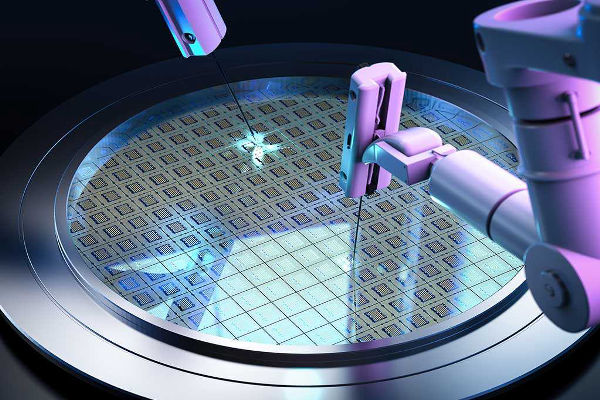Introduction
The expanding semiconductor and electronics industry is bolstering the demand for industrial gases. These gases are essential for the ultra-clean, precise and high-yield manufacturing of modern chips and electronic devices. These chips form a crucial part of technologies like artificial intelligence (AI), Internet of Things (IoT), electric vehicles, 5G and consumer electronics. From etching and deposition to cooling and doping, the requirement for high-purity gases is rising, transforming global supply chains and infrastructure investment policies.
1. Why Industrial Gases Are Essential to Semiconductor Fabrication
Different industrial gases of ultra-pure nature (99.99%+ purity) are utilized across semiconductor fabrication steps. Common gases used include nitrogen, hydrogen, argon, helium, ammonia and silane. Nitrogen, the most abundant gas in the atmosphere, is used for its chemical inertness and electrically non-conductive properties. Its abundance makes it a cost-effective option for general purpose inerting, purging and protective silicon wafer storage away from oxygen and moisture.
Hydrogen is used extensively in the industry due to its desirable chemical properties. Its high thermal conductivity enables uniform heat transfer to the silicon wafer during annealing, aiding the reconstruction of the crystal structure. Its excellent reducing abilities find application in the epitaxial deposition of semiconductor materials like silicon and germanium. Furthermore, hydrogen can also be deposited on the wafer chips to improve their electrical resistivity. It is effective at removing tin contamination in the photolithography stage.
The low reactivity and ionization energy of argon enable it to be used as a primary plasma gas in etching and deposition reactions in semiconductor fabrications, as well as in excimer lasers for UV lithography.
Helium, another noble gas, efficiently conducts heat away from exothermic reactions to protect the products from thermal damage and runaway reactions with its high thermal conductivity. It is also used for leak detection and plasma etching.
Lastly, ammonia and silane are utilized in chemical vapor deposition for wafer fabrication, doping of atoms on the chip surface and dielectric layer formation.
2. Key Drivers Behind the Rising Demand
The growing consumption of industrial gases is driven by several factors, including but not limited to the expansion of the semiconductor industry, advancements in the manufacture of semiconductor chips, the rise of the electric vehicle and solar panel industry and the stringent cleanroom and safety standards. The increasing demand for smartphones and other sophisticated electronic devices has boosted semiconductor chip production, resulting in the establishment of new fabrication plants globally. Initially set up in parts of East Asia due to offshoring, recent trends of nearshoring and reshoring for faster delivery times have also pushed the market expansion.
Next, the advancements in the semiconductor chips manufacturing, such as miniaturization, advanced node production, increased layer count and 3D architecture development, bolster the industrial gas demand. Miniaturization, which is the reduction in chip size, and node advancement, which refers to an increase in the number and functionality of the nodes, require cleaner, more precise manufacturing, raising gas consumption per chip.
The growth of the electric vehicle and solar panel industry continues to boost the industrial gas necessity, as a result of the expanding requirement for power electronics, sensors and microcontrollers. Furthermore, the integration of AI and IoT technologies demands greater industrial gases for the necessary data centers required to run them.
Moreover, the introduction of stricter cleanroom and safety standards, outlining the use of inert gases like nitrogen and argon to prevent product contamination, also drives their application.
3. Innovations and Sustainability in Gas Usage
As the demand for industrial gases grows, the sector is beginning to recognize and accordingly reduce the detrimental environmental impact of the semiconductor manufacturing process, which includes significant greenhouse gas emissions and high energy and water consumption. One such solution is the recycling and reclaiming of argon, hydrogen and helium gases during the fabrication process to minimize fresh gas production, consumption and emissions. Reicat is one of the companies providing the argon gas recycling service to lower operating costs.
Green methods of producing hydrogen through renewable energy sources and optimizing the process to lower carbon emissions is another solution. This can be divided into solar, wind, geothermal, hydro, tidal and biomass-based production methods. Additionally, the generation of green hydrogen, obtained from the electrolysis of water, is a clean process with no hazardous by-products.
Furthermore, the incorporation of AI to optimize gas flow is also being explored. The real-time monitoring of gas flow ensures minimal wastage, detects leaks and controls the usage. Predictive analytics evaluates historical flow and leak data to understand anomalies and accordingly makes predictions of potential issues and risks for maintenance. This, in turn, reduces downtime and saves costs. Additionally, alternatives to replace high-GWP fluorinated gases for etching are undergoing investigation.
Conclusion
In conclusion, industrial gases are a critical component in the manufacturing of semiconductors and electronic devices. They ensure clean, precise, efficient and high yield production of wafer chips under strict cleanroom and safety standards.













